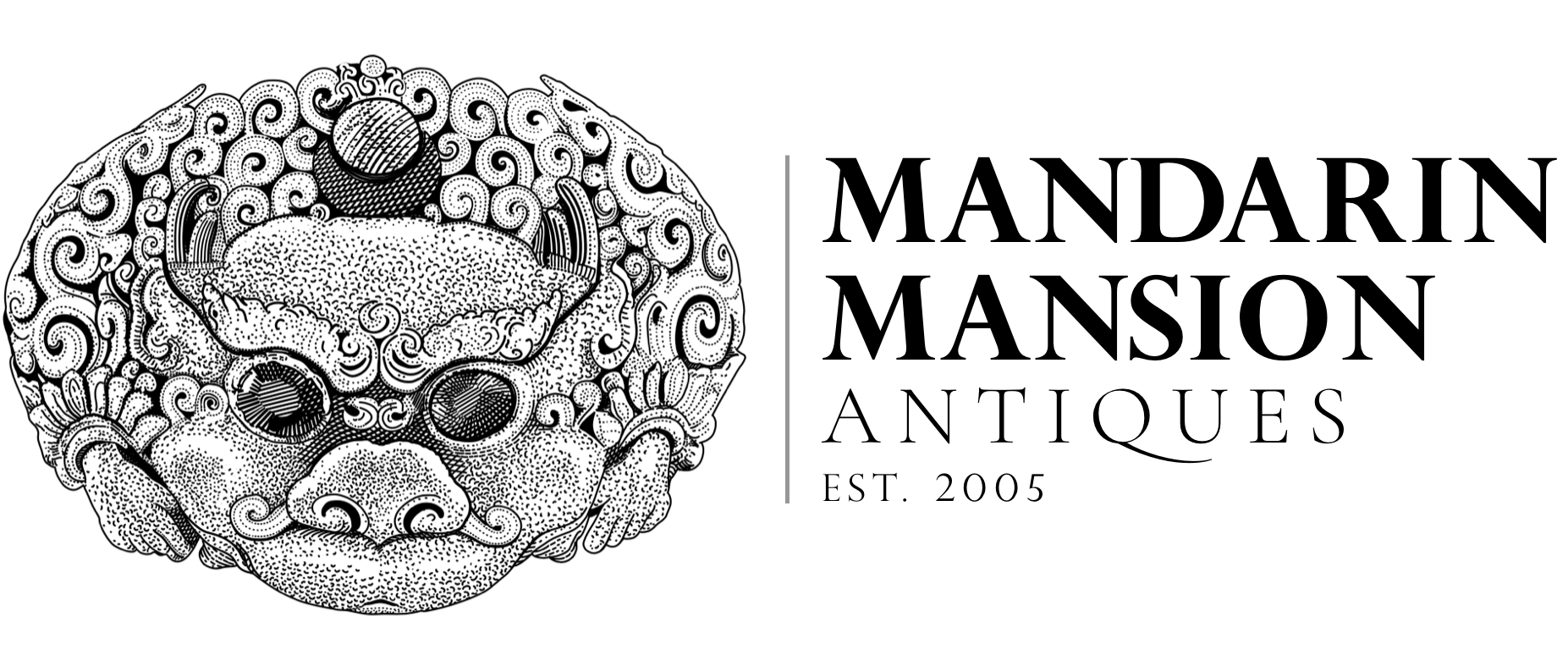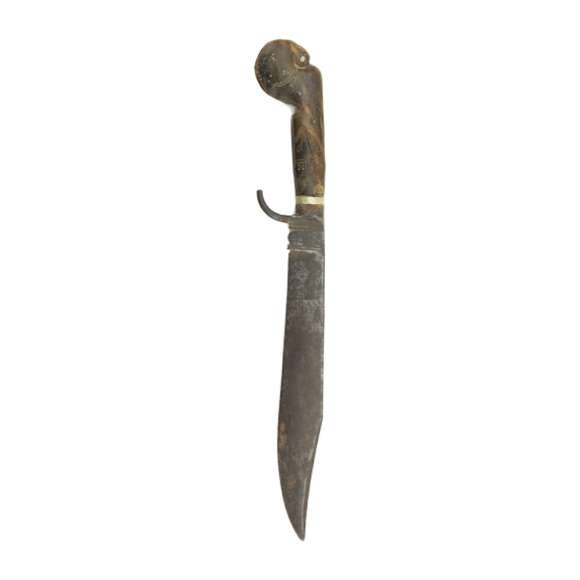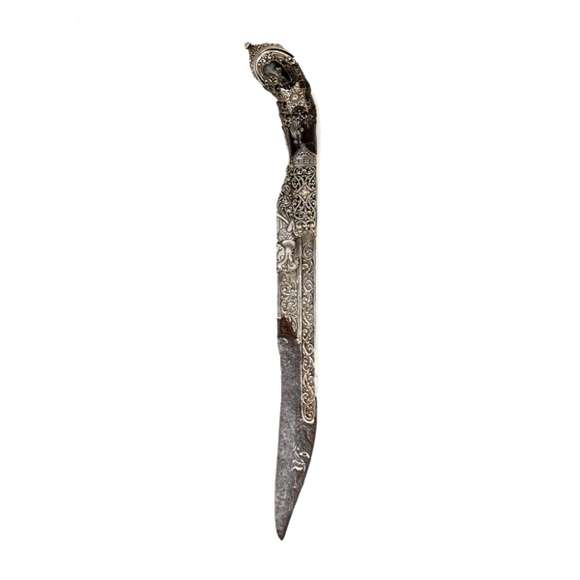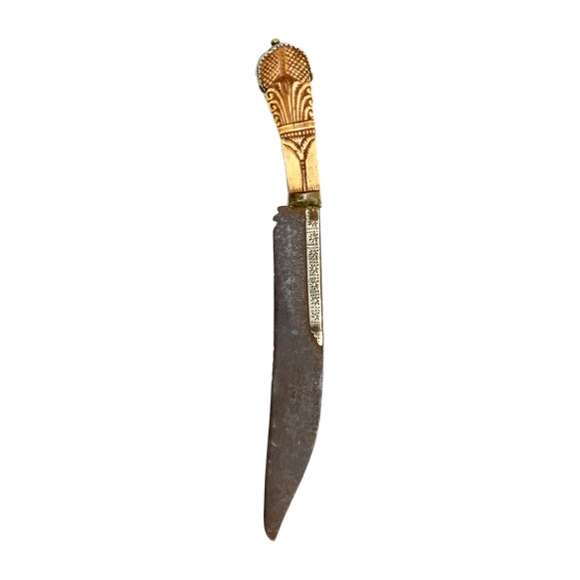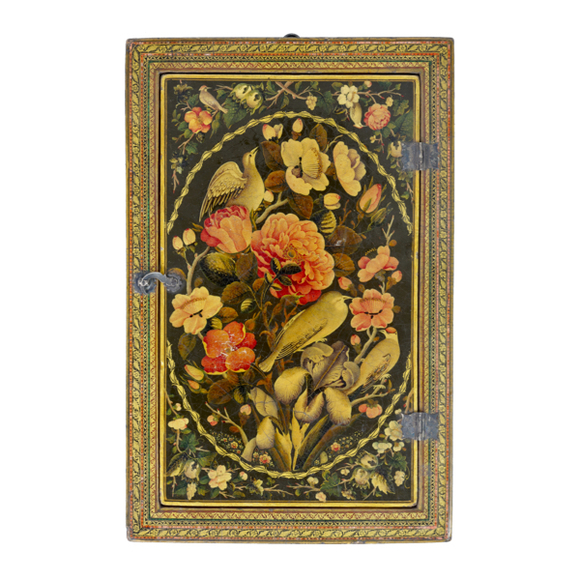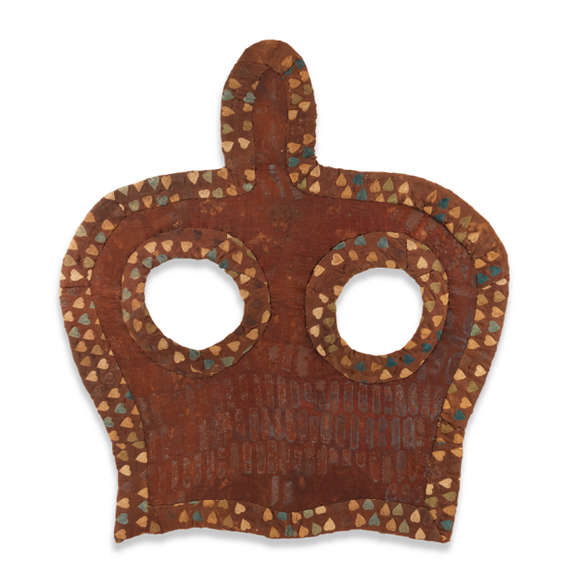With carved horn hilt and characteristic finger guard.

93 cm
127 grams
Rattan, lacquer, pigments, copper, gold
Sri Lanka, Matale district
Description
An antique Sinhalese walking cane, made of a light and relatively flexible rattan. It is lacquered in a style known as "Mātale work" or Niyapoṭen vēda (නියපොටෙන් වේද) or "finger-nail work". This distinctive type of lacquer is applied entirely without the use of brushes.
For an in-depth article on this type of work, see my article: Sinhalese lacquer work.
The top is capped with a detachable gilt-copper cap with floral engravings.
Decoration
The decoration at the very top consists of stylized petals, called palā peti. Then collor plain lines; ādāra-koṇḍu, and dots; bin̆duva. Then follows a band of circles and squares called dẹla, or "net".
Then follows various plain sections with black or red background, decorated with bands of ādāra-koṇḍu and bin̆duva, and one more instance of dẹla on a black background.
One decorative element appears twice and eludes classification at this point: It consists of a series of wavy lines in yellow and red on a black background. The effect somewhat resembles marbling in books.
Condition
Some damage to the lacquer here and there, but generally in fairly good shape.











Of nice quality, with unusual openwork silver bolster with serapendiya.
Made of pasteboard, finely lacquered with roses and nightengales.
Silk horse mask from the Xianbei ruled dynasty which ruled northern China from 386 to 534 A.D.
A charming Balinese keris holder in the form of Hanuman, the brave monkey king.
